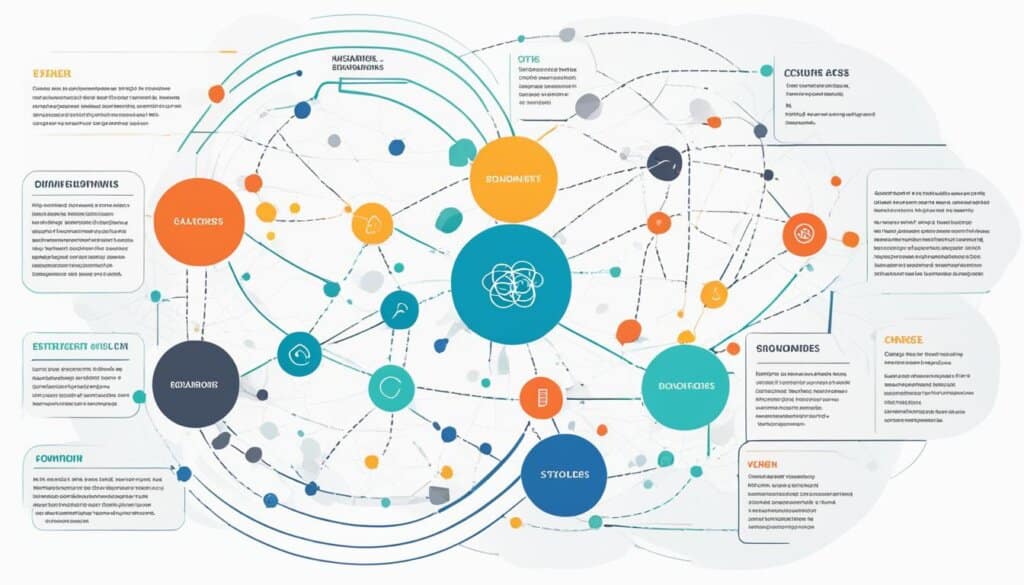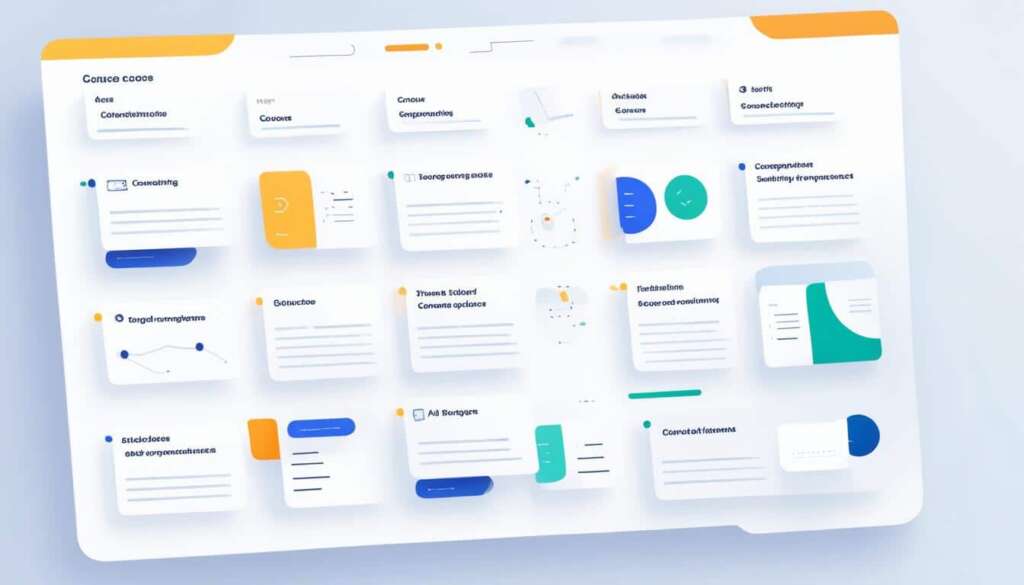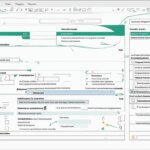Table of Contents
A use case plays a crucial role in system analysis by helping to identify, clarify, and organize system requirements. It is a methodology that describes the steps taken by a user to achieve a particular goal within a system. By understanding use cases, businesses can accurately plan their system requirements and validate their design.
Use cases are written in a narrative language and provide a comprehensive understanding of the functional requirements and possible scenarios within a system. They are valuable tools in software development, aiding in project planning, user documentation, and test case definitions.
Use cases enable developers to identify errors and understand system behavior from the end user’s perspective, ensuring a seamless user experience. They also facilitate effective communication and collaboration between stakeholders by clearly defining system boundaries and requirements.
In the following sections, we will explore the characteristics and elements of use cases, learn how to write them effectively, and discuss the benefits they bring to the software development process.
Characteristics and Elements of Use Cases
Use cases are an essential tool for system analysis, as they provide a detailed description of the functional requirements from the perspective of end users. They focus on the goals of interactions between the system and actors, capturing the paths from trigger events to achieve those goals. Each use case consists of a main flow of events and alternate flows to handle normal variations and unusual situations.
Functional requirements are organized and modeled within use cases, allowing for a comprehensive understanding of the system’s behavior. The use cases describe both the main flow and alternative flows, providing a clear blueprint for how the system should operate in various scenarios. It is important to note that use cases can be multi-level, with one use case utilizing the functionality of another.
In addition to functional requirements and goals, use cases incorporate other important elements. These elements include actors, stakeholders, preconditions, triggers, and post-conditions. Actors are the individuals or entities that interact with the system, while stakeholders are those with an interest in the system’s development or use. Preconditions are the requirements that must be met before the use case can be executed, while triggers are the events that initiate the use case. Post-conditions define the state of the system after the use case has been successfully completed.
Elements of a Use Case
| Element | Description |
|---|---|
| Functional Requirements | The specific behaviors and actions that the system must exhibit. |
| Goals | The desired outcomes or objectives of the system/actor interactions. |
| Scenarios | The different paths the use case can take to achieve the desired goals. |
| Actors | The individuals or entities that interact with the system. |
| Stakeholders | The parties with a vested interest in the system’s development or use. |
| Preconditions | The requirements that must be met before the use case can be executed. |
| Triggers | The events that initiate the execution of the use case. |
| Post-conditions | The state of the system after successful completion of the use case. |
When defining the design scope of a use case, it can range from a specific system or subsystem to the entire enterprise. This allows for a flexible approach in creating use cases that cater to different levels of complexity and scale within an organization.
By encompassing functional requirements, goals, scenarios, actors, stakeholders, preconditions, triggers, and post-conditions, use cases serve as a comprehensive tool for understanding system behavior from the end user’s perspective. Their meticulous documentation ensures clarity and consistency throughout the software development process.
How to Write a Use Case
When developing a system, it is crucial to have well-written use cases that effectively describe the system’s functionality. There are two types of use cases: business use cases and system use cases. Business use cases focus on the business processes being described and the actors involved, providing a high-level understanding of how the system supports the overall business goals. On the other hand, system use cases describe the specific processes within the system, detailing the interactions between the actors and the system itself.
When writing a use case, several considerations must be taken into account. The first step is determining the system users and understanding their goals. This involves identifying the different actors who will interact with the system and defining what they aim to achieve through their interactions. Once the users and their goals are established, it is essential to describe the course of events that users will follow to reach their goals.
Writing use cases in a narrative language is crucial, as it allows developers to describe the steps from the user’s perspective. By using a narrative format, developers can effectively communicate the intended functionality of the system and provide clear instructions for the system’s behavior. Additionally, narrative language ensures that use cases are easily understandable by stakeholders who may not have technical expertise.
It is also important to consider alternate courses of events when writing use cases. Not all interactions will have a straightforward path to achieving the desired goals. Users may encounter different scenarios or encounter unexpected situations during their interactions with the system. Therefore, use cases should account for these possibilities and outline the steps to be taken when such scenarios arise.
Another aspect to consider when writing use cases is extending use cases. This involves incorporating additional use cases that add more functionality to the existing system. By extending use cases, developers can modularize the system’s functionality and maintain a clear and organized structure.
To visually represent the interactions within a use case, sequence diagrams can be utilized. Sequence diagrams help in modeling the interactions between different objects within a single use case, providing a visual representation of the sequence of events. They depict the order of interactions and the flow of information between the actors and the system.
By following these guidelines and utilizing narrative language and sequence diagrams, developers can write comprehensive and effective use cases that accurately capture the system’s functionality and interactions.
Example Use Case Sequence Diagram:
| Actor | System |
|---|---|
| User | System |
| The user selects an item from the menu. | |
| The system retrieves the information for the selected item. | |
| The system displays the details of the selected item. |
In the example sequence diagram, the user interacts with the system by selecting an item from the menu. The system responds by retrieving the information for the selected item and then displaying the details to the user.
Benefits of Use Cases
Use cases play a crucial role in the software development process, offering several benefits to organizations. Let’s explore some of the key advantages:
1. Planning
By using use cases, organizations can effectively plan the complexity and cost of the system. The list of goals outlined in the use cases provides valuable insights into the overall project scope. This planning exercise helps stakeholders and project teams understand the requirements and allocate appropriate resources.
2. Requirements Gathering
Use cases serve as a valuable tool for identifying real system needs. Through thorough analysis and documentation, use cases aid in gathering the necessary requirements. This ensures that the developed system aligns with the desired objectives and meets the expectations of the end users and stakeholders.
3. Error Identification
One of the significant advantages of using use cases is their ability to identify potential errors or gaps in the system design early on. As developers write extensive use cases, they are more likely to uncover subtle system requirements and address them proactively. By detecting and resolving errors in the early stages, developers save valuable time and effort in the long run.
4. Stakeholder Understanding
Use cases enhance stakeholder understanding by providing a clear and comprehensive overview of the system’s functionality. Stakeholders can review the use cases and gain a deeper understanding of how the system will address their specific needs and goals. This facilitates effective collaboration between the development team and stakeholders, leading to better outcomes.
5. System Boundaries
Use cases help define the boundaries of the system by outlining what the system should do rather than how it should be implemented. This prevents scope creep, ensuring that the project stays focused on its intended goals. By clearly defining the system boundaries, use cases provide a framework that guides the development process and keeps it aligned with the project objectives.
Overall, use cases offer multiple benefits, including aiding in planning, requirements gathering, error identification, stakeholder understanding, and system boundary definition. Their inclusion in project planning, user documentation, and test case definitions makes them an invaluable tool throughout the software development lifecycle.

Use Case vs. User Story
In software development, understanding the needs and goals of system users is crucial. Two commonly used methods to identify and describe these needs are use cases and user stories. While they both serve the purpose of capturing system users’ goals, they have different approaches and uses.
A use case provides a detailed, step-by-step description of the interactions between a system and an actor to achieve a specific goal. It outlines the activities and processes involved in reaching the desired outcome. Use cases are typically used by developers and testers to understand the system’s behavior and ensure that it aligns with user requirements. They offer a comprehensive and documented view of the system’s functionality.
On the other hand, a user story is a simpler and more narrative-oriented description of how a user will experience the system’s functionality. It focuses on the result of activities rather than the detailed process. User stories are often used in conversations and collaborations between customers, users, and executives to determine product features and prioritize development efforts. They provide a concise and user-centric perspective on the system’s benefits and value.
While use cases emphasize detailed documentation and analysis, user stories promote customer collaboration and simplicity. Both methods have their merits and can be used in software development projects, depending on the needs of the stakeholders and the level of detail required. By combining the strengths of use cases and user stories, teams can achieve a holistic understanding of system users’ needs and deliver software that aligns with their goals.
FAQ
What is a use case?
A use case is a methodology used in system analysis to identify, clarify, and organize system requirements. It describes the steps taken by a user to complete an activity and includes the actors (system users), the goal (final successful outcome), and the system (process and steps taken to reach the goal).
Why are use cases important?
Use cases are essential in planning system requirements, validating design, testing software, and creating user manuals. They help identify errors and understand the behavior of a system from the end user’s perspective.
How should use cases be written?
Use cases should be written in a narrative language, describing the functional requirements and possible scenarios. They can be used for various purposes in software development, such as project planning, user documentation, and test case definitions.
What are the benefits of use cases?
Use cases help with planning by establishing the complexity and cost of the system based on the list of goals. They also help identify real system needs early on and improve stakeholder understanding. Use cases prioritize what the system should do rather than how it should do it.
How is a use case different from a user story?
A use case is a step-by-step description of the interactions between a system and an actor to reach a goal, while a user story is a narrative that describes how a user will experience the functionality of the system and focuses on the benefit derived from performing a specific activity. Use cases are more detailed and documented, while user stories are simpler and used for conversations and collaboration.













